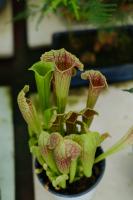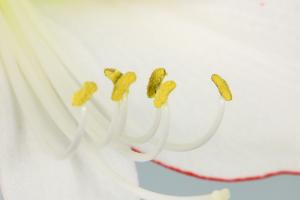What Happens to a Plant Cell in Water
When a plant cell is placed in water, various changes occur which affect its structure, function, and overall health. The following paragraphs outline some of the main events that happen to a plant cell when it is submerged in water.
Cell Wall Expansion
One of the first changes that happens to a plant cell in water is cell wall expansion. The cell wall is a rigid, permeable layer that surrounds plant cells and provides structural support. When a plant cell is submerged in water, water molecules move into the cell by osmosis, causing it to swell. As a result, the cell wall stretches and eventually reaches its maximum capacity. Once this occurs, water can no longer enter the cell and the cell stops swelling.
Turgor Pressure and Plasmolysis
As water continues to enter the plant cell, a pressure known as turgor pressure begins to build up. Turgor pressure is the pressure exerted on the cell wall by the contents of the cell. Essentially, it is the force that pushes against the cell wall and keeps it rigid. When turgor pressure is high, the plant cell becomes more rigid and is able to maintain its shape. However, when there is a lack of water in the plant cell, turgor pressure decreases and the cell becomes flaccid.
If the plant cell loses too much water due to an imbalance between the concentration of solutes inside and outside the cell, it may undergo plasmolysis. Plasmolysis occurs when the cell membrane separates from the cell wall and the contents of the cell become dehydrated. This can cause the plant cell to become damaged or even die.
Chloroplast Movement
Chloroplasts are organelles found in plant cells that are responsible for photosynthesis. When a plant cell is submerged in water, chloroplasts move towards the perimeter of the cell. This is because the cell wall is thin and more transparent at the edges, allowing light to pass through and reach the chloroplasts. Additionally, when chloroplasts are exposed to light, they are more likely to produce energy through photosynthesis.
Conclusion
In conclusion, when a plant cell is placed in water, various changes occur which affect its structure and function. Cell wall expansion, turgor pressure, plasmolysis, and chloroplast movement are just a few examples of what happens to a plant cell in water. By understanding these processes, we can better appreciate how plants grow and adapt to different environmental conditions.

 how many times do yo...
how many times do yo... how many planted tre...
how many planted tre... how many pine trees ...
how many pine trees ... how many pecan trees...
how many pecan trees... how many plants comp...
how many plants comp... how many plants can ...
how many plants can ... how many plants and ...
how many plants and ... how many pepper plan...
how many pepper plan...































